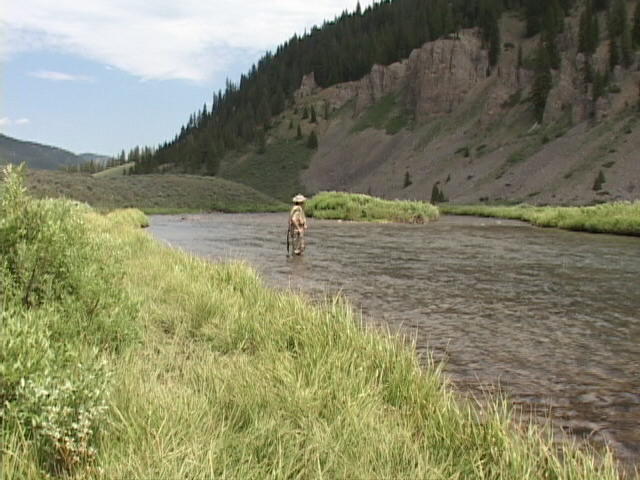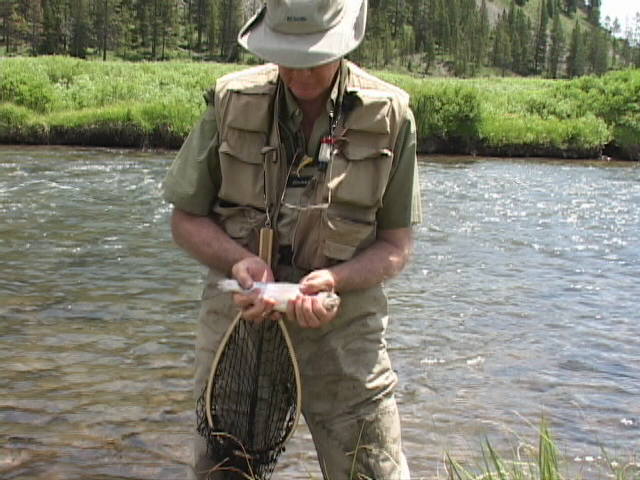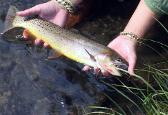
The pride of Yellowstone
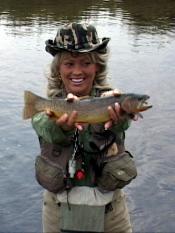
this beautiful cutthroat.
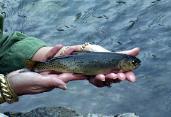
of the streams in Yellowstone.
Although they are probably the
most sought after fish in the park,
they are not native to Yellowstone.
They are stream-bred, wild trout.
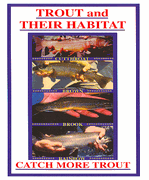
This DVD covers the different
species of trout and the methods and techniques used to catch each type. Shot nationwide on several streams.
Click Here for More Information
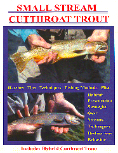
Trout DVD teaches some of
the preferred methods and
techniques used for catching
the cutthroat trout.
Click Here for More Information
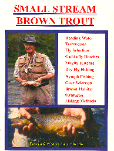
Trout DVD teaches some of
the preferred methods and
techniques used for catching
the elusive brown trout. Shot
nationwide.
Click Here for More Information
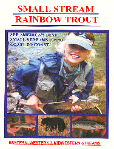
shows you many of the best
methods and strategies used
for catching rainbow trout on
the fly. This program was shot
from coast to coast.
Click Here for More Information
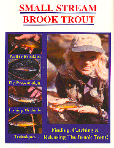
teaches the best methods
and techniques for catching
the brook trout. It was shot in
the west, mid-west and
eastern United States.
Click Here for More Information
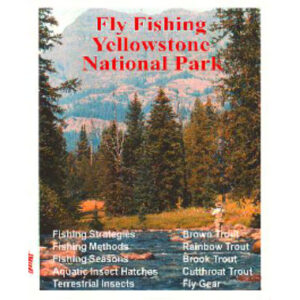
National Park:
This new DVD (2 Disc Set) provides over 4 hours of information and instructions on fishing for trout in the park. Available Now! $49.95
Click Here for More Information
There are five (5) species of trout that you can catch fly fishing the Yellowstone National Park – the brown, brook, cutthroat, rainbow and lake trout. Each species requires different methods and techniques of fishing if you are going to be consistently successful in catching them on the fly. The lake trout pose a great threat to the future of the cutthroat. There are also native Grayling and Mountain Whitefish.
Cutthroat Trout:
The cutthroat trout is what we call the symbol of Yellowstone National Park’s trout. It is the only native fish that is of prime interest to the fly angler. It is the objective of the park (and other national parks like Yellowstone) to protect and restore the native species to their original habitat.
Cutthroat trout are native to the Western United States. Because they have lived and survived in isolated areas in most parts of the West, they have developed into several distinct sub-species and strains. Three subspecies-Yellowstone, West Slope and Snake cutthroat trout exist in the park. There is just something about catching native fish that is different from catching stream-bred fish or stocked fish. We like to think of them as fish that were stocked by God.
Many of the streams in Yellowstone includes hybrid cutthroat trout called “Cutbows”. Cutthroat and rainbow trout will interbreed because they are closely related. They produce fertile hybrids. In waters where both parent species exist there is no way of positively separating the cutbow from the rainbow and cutthroat where they have interbred. DNA analysis is just not a practical procedure for anglers.
Native cutthroats are usually a brownish gold color and have relatively large spots. The name “cutthroat” came from the obvious red mark at the lower part of their gills. Most of the time the hybrid cutthroat, or cutbows as they are called, have smaller spots than the pure cutthroats. They usually show a rainbow line but much less noticeable than the rainbow trout. The colors of the cutbows are more subdued. Normally the stomach is not as yellow as the cutthroat. Neither is the cut mark or red throat slash as noticeable on the cutbow as it is the cutthroat.
As far as regulations are concerned, Yellowstone National Park treats the cutbow as a cutthroat.
If the fish you catch has a red slash, put it back!
Rainbow Trout:
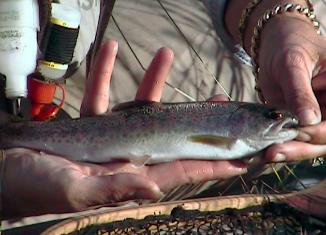
The rainbow trout is native to the Western United States. It was at one time stocked in the park. Rainbows probably average 9 to 12 inches long but anglers occasionally catch one that is over twenty inches long or better.
You will find the rainbow in faster water out in the open, hiding only under the cover of a broken surface of water. They tend to feed on the surface more so than the other trout. Of course they will spook very easily if danger approaches.
They prefer temperatures ranging from the mid fifties to the high sixties. They can survive in water temperatures as low as 32 degrees F and as high as 80 F.
The rainbow is the most sought after trout in the park, probably because it is the most plentiful species. It also is an exciting fish to catch. Rainbows tend to jump more than the brown or the brook trout. They are found in most of the streams in the park. They spawn in the spring.
Rainbow trout have a pink or red line that runs from their gill cover to their caudal fin. They get their name from this rainbow line. Rainbow trout are native to streams in the Western United States and Canada that flow into the Pacific Ocean. Although they were stocked at one time in the Yellowstone National Park they are now managed as either wild trout in the “Wild Trout Enhancement Area” or as a non-native trout in the “Native Trout Conservation Area” of the park.
Brown Trout:
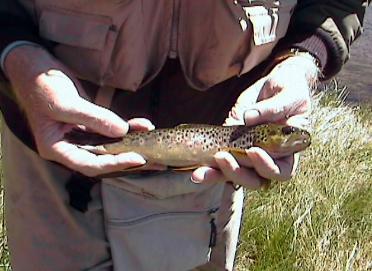
The brown trout is originally from Europe. It was at one time stocked in the park’s streams. Of the four trout species, It is the largest to be found in the park. Brown trout are very difficult to spot in a stream. They can actually change their color to blend in with their surroundings. They are also capable of resting on the bottom of the stream and when they do, they look much like the bottom.
Browns are found mostly in streams in the lower elevations. They prefer water temperatures ranging from the mid 50’s up to the high 60’s F. They are capable of surviving in water temperatures as high as eighty degrees F.
Most smaller brown trout, those less than 12 inches long, feed on insects as well as a large variety of other foods. Once they reach a larger size they tend to change their feeding habitats and prey on bait fish, crustaceans and even other small trout. This allows a few of them to grow to a very large size.
It has always been assumed that the brown trout hides under rocks and crevices in the banks most of the day and that they prefer to feed only under low light conditions. This is not nearly as true as once thought. They will generally feed most of the time they are undisturbed for long periods of time. It is certainly true that they are very difficult to approach without spooking them and during the time anglers are attempting to do so, they definitely hide under rocks.
Brown trout spawn in the fall. During this time the trout (especially the males) can be very aggressive. Both the males and the females tend to lose their normal caution and completely expose themselves at times. Although anglers find it very difficult to pass up a large brown trout involved in the spawning process, they should. Catching a big brown trout while it is spawning and/or protecting its redd is certainly nothing to take pride in even though it may be legal to do so. In our opinion it is unsportmanlike.
Brook Trout:
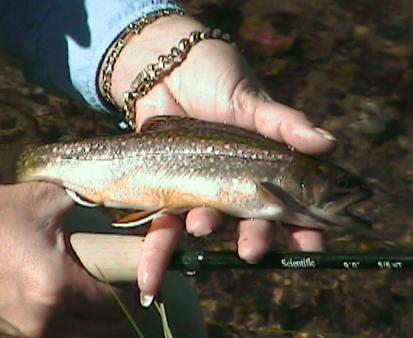
Brook trout were stocked in Yellowstone at one time. They are now all wild fish. Brook trout spawn in the fall. The juveniles stay hidden in the gravel until Spring. They average 4 to 8 inches in length and rarely exceed 12 inches. A brook trout found in a stream that is over 10 inches long should be considered a trophy. The brook trout has a brown to a dark green basic color with a distinctive marbled pattern of lighter shades across the sides and back and extending to the dorsal fin, and often to the tail. There is a very distinctive scattering of red dots, enclosed by blue colors along the flank. The belly and lower fins are reddish in color and the fins have white leading edges. Often the belly, particularly the males, becomes very red or orange when the fish are spawning. They prefer water temperatures of less than 68 degrees F. They rarely live longer than five years and usually only three years.
Copyright 2009 James Marsh

